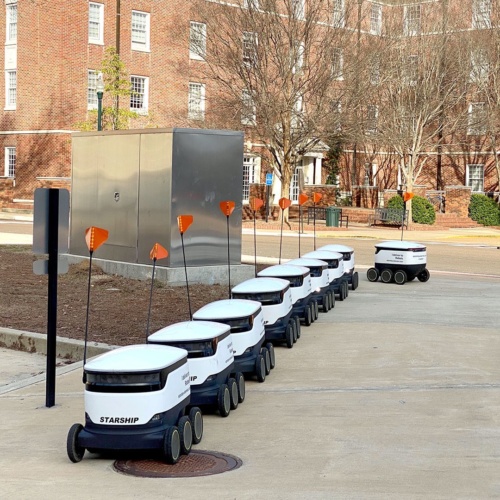
The rapid increase in online shopping is resulting in several new challenges. The parcels, packages, groceries, and hot meals ordered online are resulting in a growing number of last-mile deliveries to customers, using a wide range of vehicles that use road and kerbside space, contributing to air pollution and greenhouse gas emissions. Over-time, online retailers are offering customers ever-faster delivery options, with same-day and instant delivery offers becoming ever-more common, with a consequent reduction in freight transport efficiency.

In their efforts to generate sales and gain market share, many online retailers entice purchases with discounted prices and so-called ‘free deliveries’, with many consumers citing ‘free delivery’ as a major factor in their purchasing decision. Some last-mile parcel deliveries ‘fail’ when no-one is at home to receive them, requiring redelivery on a subsequent day and rates of returns, particularly linked to clothing purchases are increasing, generating more transportation. Other issues linked to the rise in online shopping include the increase in self-employed and casual delivery and warehouse work, and an increase in the closure of physical stores, with many high streets becoming run-down.
Crate expectations: innovations in last mile delivery technology
How Ocado is reshaping retail with robotics and automation
Work we carried out in the FTC 2050 project has provided various insights into the key role that engineers can play in helping design and manage our transport and computing environments to better cater for the growth in last-mile deliveries. Our research has indicated that in dense urban areas, ‘portering’ (the carriage of freight by people on-foot) and cargo cycles, once a mainstay of delivery systems before the advent of the combustion engine, should be re-visited as sustainable solutions. This requires companies to re-engineer their delivery systems using logistics hubs and mobile depots (i.e. trailers used as storage locations) positioned close to delivery catchments to make these modes operationally viable. In addition, delivery companies should consider new business models in which they collaborate with each other in congested urban areas to reduce total vehicle activity and its impacts, as well as their operating costs.
In general delivery companies and retailers should make use of computing technologies to assist drivers and provide customers with up-to-date delivery information. Retailers should also reconsider their delivery options to provide customers with slower, more sustainable delivery options to improve load consolidation, as well as enhanced systems for both providing goods to customers using collection points and locker banks, as well as using these facilities for improved goods return. The challenge is to understand where to locate such facilities in order to best serve consignees in the surrounding area, and the operating attributes of these facilities.
Policymakers can support and plan the land and building requirements of facilities that make last-mile logistics more sustainable (such as logistics depots and hubs, vehicle storage and recharging locations, collection points and locker banks). They may also need to take action if retailers persist in offering delivery services that do not reflect their full internal and external costs. Urban traffic authorities can also investigate how kerbside space can be more equitably shared between logistics providers and other users through automated and smart booking systems.
Vehicle manufacturers have an important role to play in terms of providing a greater range and quantity of clean last-mile delivery vehicles. Unmanned aerial vehicles could also assist in rural last-mile logistics and the movement of critical items such as medical supplies, but face challenging barriers in terms of safety and security in urban areas. Similarly, the on-going development of droids are liable to conflict with pedestrian activity in busy locations, and may be best suited to indoor environments (in offices, factories and warehouses). Recent research has indicated that as autonomous road vehicles become available, they have the potential to be used in conjunction with the on-foot porters previously described.
Consumers concerned about last-mile sustainability can also make a difference by using retailers that provide ‘green’ delivery options, selecting the least transport-intensive when placing orders, and being sufficiently patient to wait for all the items in their orders to arrive in a single delivery.
Dr Tom Cherrett, Professor of Logistics and Transport at the University of Southampton and Dr Julian Allen, Senior Research Fellow at the University of Westminster and the Centre for Sustainable road freight










Water Sector Talent Exodus Could Cripple The Sector
Well let´s do a little experiment. My last (10.4.25) half-yearly water/waste water bill from Severn Trent was £98.29. How much does not-for-profit Dŵr...